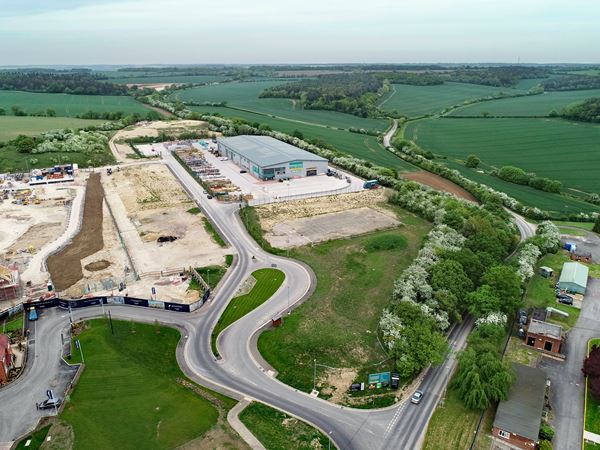Our original 32 new towns delivered through the New Towns Act, provided homes for 2.8m people, that’s 4.3% of UK households. Cynicism about concrete cows and roundabout cities aside, new towns are generally popular, diverse, healthy places in which to live, and continue to flourish.
The Town and Country Planning Association (TCPA) is the greatest advocate of the Garden City movement and Katy Lock is responsible for simultaneously conserving and updating Howard’s ideology. The organisation’s research has concluded that today’s new communities should combine the principles of the garden city movement with the highly effective delivery mechanisms of the post war New Towns, updated for the twenty-first century and learn lessons – good and bad – from the past. So, when the Government announced its interest in ‘garden communities’, including proposals to create five new garden towns in the Oxford-Cambridge Corridor, it fell to Katy to convince officials that the ‘garden’ prefix was much more than a cliché, and to promote the principles that were successfully pioneered at Letchworth, Milton Keynes and elsewhere.
“The garden city principles remain as relevant today as they were a century ago,” says Katy. “From garden suburbs through to post-war new towns, communities created on these principles have stood the test of time. They offer high quality lifestyles that promote wellbeing, a wide range of employment opportunities and cultural services, an appropriate mix of house types and tenures, walkable, tree lined streets and high-quality design, while also promoting access to nature and opportunities for biodiversity.”
So, can our increasingly shaky political system provide the long-term support essential to the roll out of these new towns? With the increasingly rapid turnaround of housing ministers, is there the political appetite to see the ideas through, or will these new towns simply follow the path of the eco town, trumpeted by one government, then swiftly chewed up and spat out by the next?
“There is a recognition across Government that new communities have an important part to play in resolving the housing crisis,” explains Katy. “The All-Party Parliamentary Group on New Towns has been fundamental in communicating the benefits, and its membership from across parties provides some political consistency.”
“Having identified the need, the Government must now focus on planning and delivery. This means consistency in commitment. To get the private sector on board, the proposition must be de-risked and free from political interference. New towns need local leadership which transcends political cycles.”
Much of the current debate is focused on the best legislative vehicle to allow delivery. The TCPA firmly believes that, with small modifications, the New Towns Act 1981 is the best route. “We could use the current New Towns legislation,” says Katy. “But there need to be safeguards in place and stronger requirements for public participation in the process. Currently there are no statutory obligations on development corporations in relation to sustainable development, good design or climate change. As development corporations are not defined in law as local planning authorities, they are not covered by the provisions of the Planning and Compulsory Purchase Act 2004.”
A number of alternative suggestions have been made to deliver large-scale growth, including the 2008 major infrastructure planning regime. The TCPA is not in favour of this route: “The complexity of creating a whole new town is such that there is much more to do, over a much longer timescale, than building infrastructure. A town is not built in one go, but grown over several decades.”
“The Government has also shown an intention to extend permitted development rights even further to reach its housing targets more quickly. Creating new towns based on the ultimately democratic garden cities principles is an opportunity to deliver new homes at speed, but crucially deliver high quality and inclusive places at the same time. But it requires a strategic approach and long-term, joined-up thinking. We need a national spatial plan within which government identifies areas of search and supports local authorities to work together to identify scale and location. A modernised New Towns Act can then be used to designate and deliver through modernised development corporations.”
“These garden towns will evolve and flourish only if there is consistency – consistency of leadership, consistency of principles and through-thinking across generations.”
Katy Lock has over 18 years’ experience in planning and environmental practice with particular expertise in policy development, analysis and thought leadership in relation to new communities, housing, green infrastructure, urban design and sustainability.





 Acting on behalf of the landowner, our development specialists offered the site through an open market tender process. A number of bids were received and a purchaser was subsequently chosen. Our experts have now negotiated and agreed terms for an unconditional sale.
Acting on behalf of the landowner, our development specialists offered the site through an open market tender process. A number of bids were received and a purchaser was subsequently chosen. Our experts have now negotiated and agreed terms for an unconditional sale.





